All-white kitchens, where the appliances, surfaces, and décor are monochrome, are an everlasting trend in kitchen design showrooms and magazines. White kitchens are minimalist and feel clean when we know that we can see every stain in the area. While they look wonderful when the kitchens are not being used, it takes maintenance to keep them pristine.
Tips on How to Keep White Kitchen Spotless
To keep your all-white kitchen spotless, we have a guide on what to use for each surface of your kitchen. The best tip is knowing what to use (and what to avoid) when keeping your white kitchen bright.
Wood


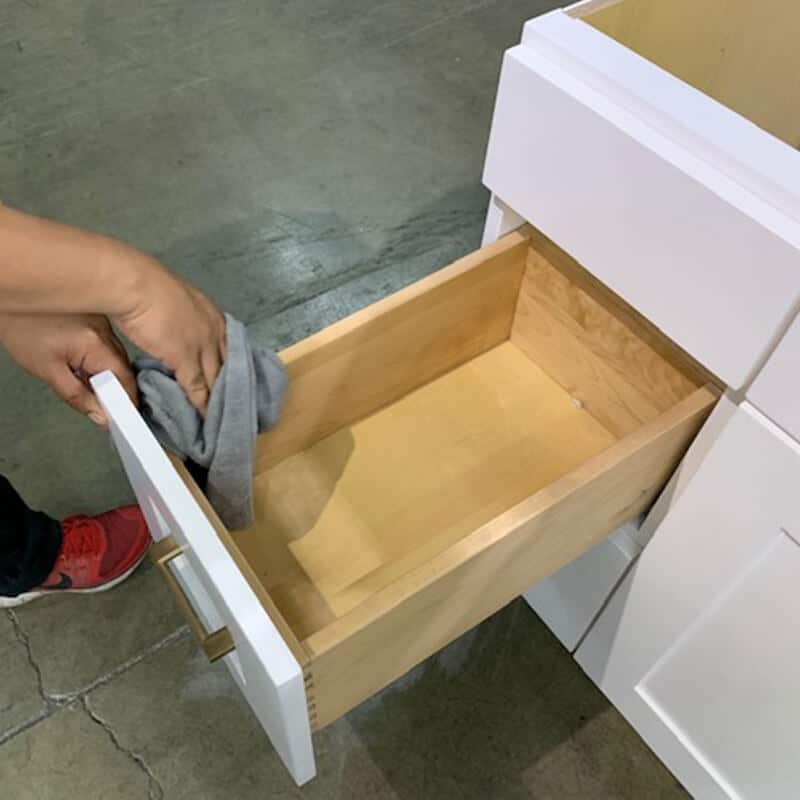
Wood is a natural surface that is best cleaned with mild soap and water. After rinsing, blot dry with a soft cloth-like microfiber.
If you have a persistent light stain, some unique solutions are salt and lemon. Pour salt over the stained area, then scrub with a cut lemon half. If this does not remove the stain and the mark looks deep-set, resanding the wood will eliminate the defect.



At Best Online Cabinets, our preferred method is using Magic Cabinet and Wood Cleaner on wood grain or painted wood. It leaves a streak-free finish when paired with a soft cloth for our own cabinets.
Painted Surfaces


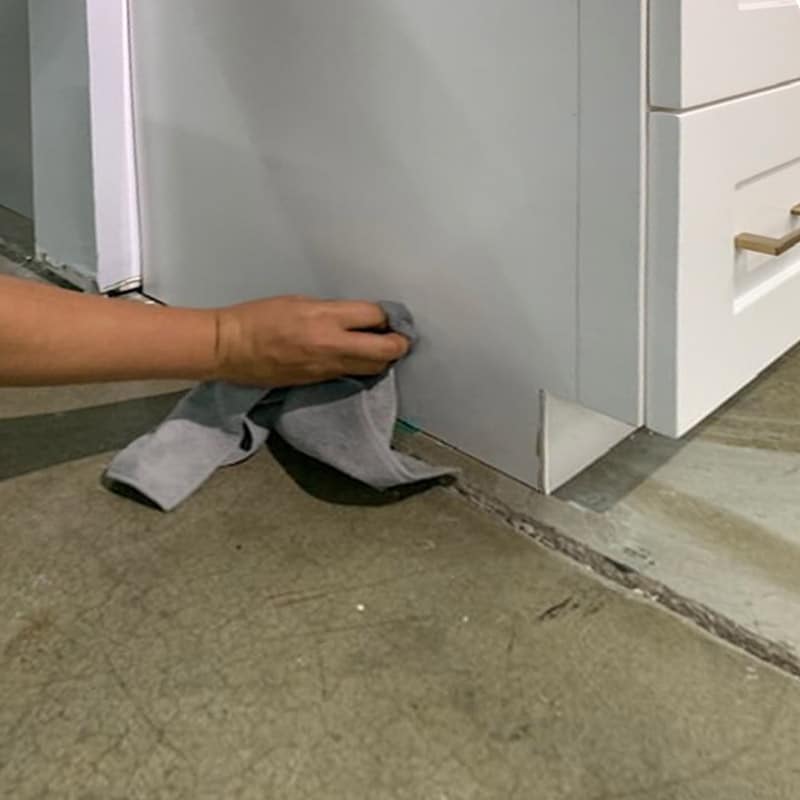
Usually, this applies to painted wood, but this refers to painted surfaces in general. While a wood cleaner or a non-abrasive cleaner can work, warm water and soap are usually sufficient. If using a cleaner, spot test this in a hidden area to ensure it does not damage the paint.
If you are working on a vertical painted surface, start from the bottom of the surface and work upward. This way dirty streaks are easier to clean up by scooping them up into your cloth.
Metal


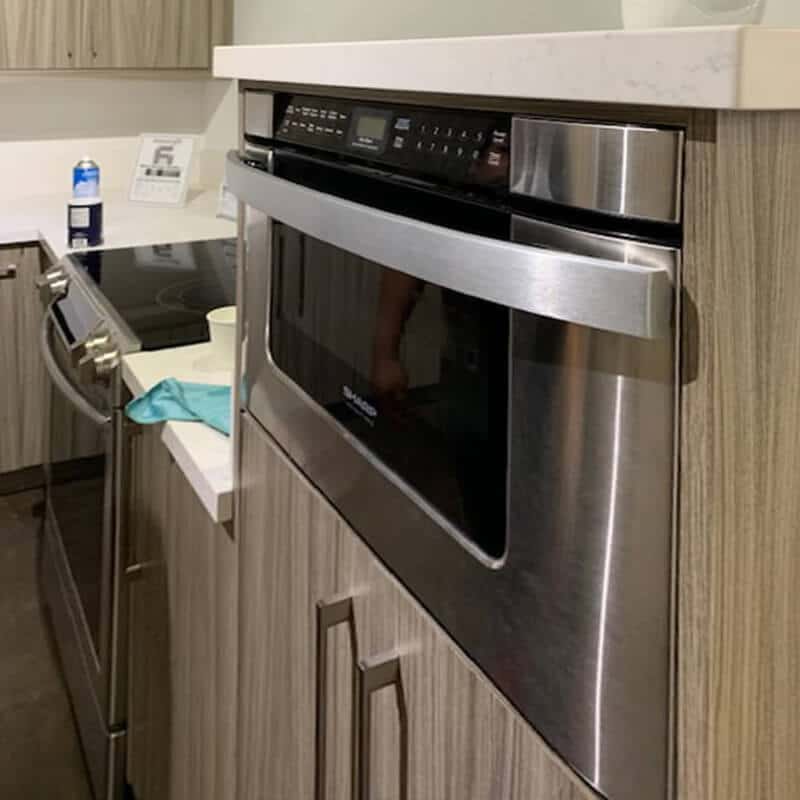
Metal is one big category but not all metals are alike. How you clean aluminum is different from how you clean chrome or even brass.
Aluminum can be cleaned with simple soap and water. While baking soda is used in most cleaning, baking soda reacts to aluminum and is best avoided.
Stainless Steel can be cleaned with either a multi-purpose or specialized cleaner and a wet cloth. Rub the cleaner in the grain of the steel, if there is a grain. Rinse with water and buff dry in the direction of the grain of the steel.
Brass and copper can be cleaned with a commercial cleaner. But a natural alternative is to cut a lemon in half, pour salt into the open half. Use this combination to scrub the dullness out of the copper surfaces. Rinse with warm water and buff dry with a microfiber or terry cloth rag.
When in doubt, most cleaning of metals can be handled with soap and water. Refer to individual metals when dealing with persistent stains.
Ceramic

Ceramic is found on many countertops, kitchen backsplashes, and tile floors. While ceramic itself is resistant to many stains, the grout binding the different surfaces is prone to unsightly mildew.
Ceramic is generally resistant to stains, especially if it is unglazed like tile floors. You may see a slight film on the surface of ceramic tiles, especially if next to sinks or cooking appliances. This can be cleaned by spraying a mixture of vinegar and water and wiping the surface.
The grout between ceramics is more likely to show grime. This can be cleaned up by either using diluted or mild bleach and scrubbed with a toothbrush. Alternatively, you can use vinegar and baking soda to form a paste and scrub with that solution.
Most important caution: Avoid abrasive cleaners or scouring pads on ceramic surfaces or it will damage the ceramic surfaces.
Further grout stains can be prevented between the ceramic tiles with grout sealant. Unglazed ceramic tiles have their own protective sealant to increase stain resistance, especially for high foot traffic areas.
Sinks
The nature of kitchen sinks makes them both the cleanest and the dirtiest area of the kitchen at once. While white kitchen sinks can be cleaned with water, soap and scrubbing down, sometimes stills still persist.
For those dirty hard-to-clean grime on the bottom of the sinks, the easy solution is using bleach. But instead of scrubbing the sink, line the sink with paper towels soaked in bleach. After half-an-hour, remove the paper towels and rinse with warm water.
If you want a natural solution, use lemon juice and a carbonated liquid-like club soda or seltzer water instead. Soak paper towels with that solution and rinse with warm water after.
Glass
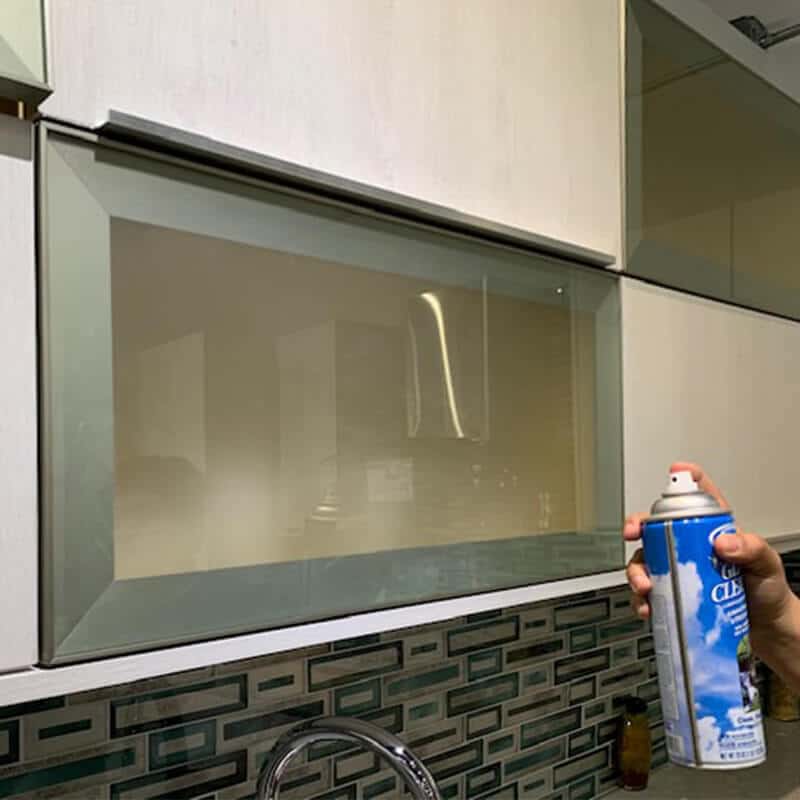
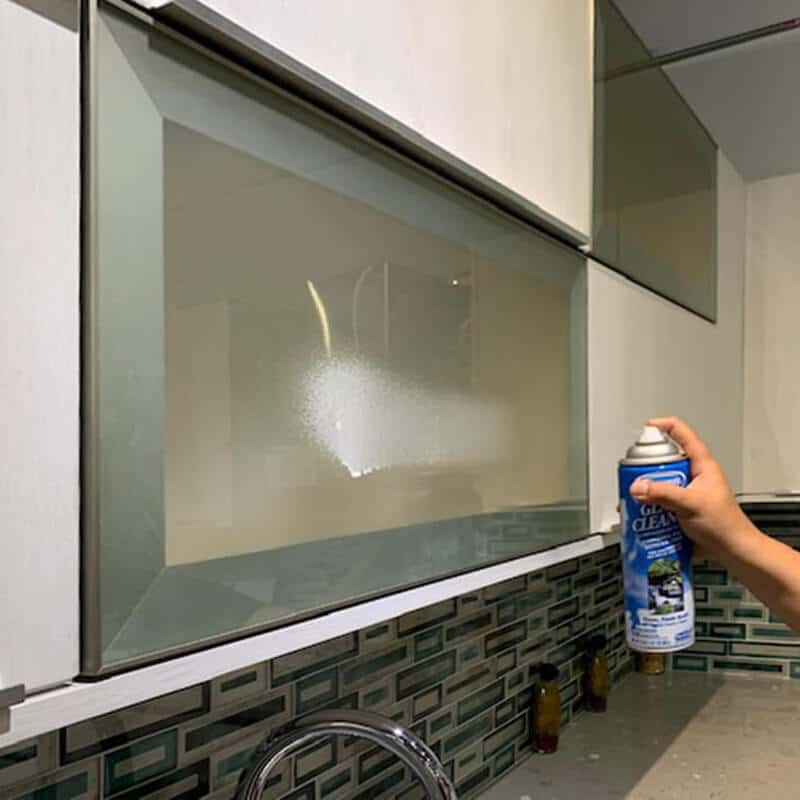

Glass is found everywhere from windows, a few countertop appliances or even countertops. Fortunately, glass is durable and most commercial multi-purpose cleaners are able to clean these surfaces. Glass cleaners have the benefit of not leaving streaks on the surface.
Most important caution: Avoid abrasive cleaning agents or rough textures like scouring pads that leave scratches. Soft cloths like microfiber clothes or terry cloth rags are recommended.
Stone (Granite/Marble/Quartz)


Most of us think of stone as a very hard surface as impenetrable to anything. Surfaces like granite and marble are not only luxurious but thought as durable. Yet stone is more sensitive to stains if they stay on long enough; stone is more porous than people think.
It is important to clean spills on a marble or granite surface right away. Any acids in a liquid, especially juices or wine can wear down your stone surface. Instead of wiping the surface to clean these spills, blotting with a soft cloth is recommended. Blotting will absorb most liquids while wiping will spread the spill to more of the surface area.
When cleaning granite or marble, use soap or dishwashing liquid mixed with warm water. Rinse and wipe thoroughly to clean, do not allow the stone surface to air dry. Otherwise, the surface will streak or be left with water spots.
Other ways to clean stone surfaces include mixing diluted ammonia and baking soda or hydrogen peroxide and drops of ammonia. Mixing the soda with ammonia will make a paste that can be scrubbed with a toothbrush. Mixing the hydrogen peroxide and tiny bit of ammonia creates a cleaning solution to wipe and blot from the surface.
There are also commercially available cleaning products for stone surfaces available; the key is that they are not acidic. Soft cloths like microfiber or terry cloth are recommended to clean up spills and stains on stone surfaces.
Laminated Surfaces
Laminate is a synthetic, clear protective layer on top of a different layer, often used to simulate wood or stone. Laminate flooring and countertops are found in many kitchens but also found in other surfaces like protective layers on shelves.
To clean a laminated countertop, use warm water with soap or mild bleach that is diluted. Beware strong bleach can alter the appearance of laminate from damage so you need to do a spot test first. Use a bit of diluted bleach in a discreet area of the laminate to see if it is suitable to use.
If there is film over the laminate from cooking grease, clean with a spray mixture of vinegar and water. But if that grease is sticky, use three parts baking soda to one part liquid detergent to create a paste. Alternatively, you can use a mixture of baking soda and water as a milder solution. Scrub gently with a toothbrush or a nylon brush to clean the affected area. Rinse the area with a damp cloth and pat completely dry.
Plastic
Generally, there are not many kitchen surfaces made of plastic so this usually applies to dishware, containers, and utensils. There are many ways to clean plastic-based surfaces, so it’s a matter of what ingredients you have at your disposal.
Most plastic areas that have contact with food might have a cloudy film. This can be cleaned with a vinegar and water solution. If the cloudiness is a hard-to-reach area, you can submerge the plastic in a vinegar and water bath. Scrub the affected area and rinse afterward.
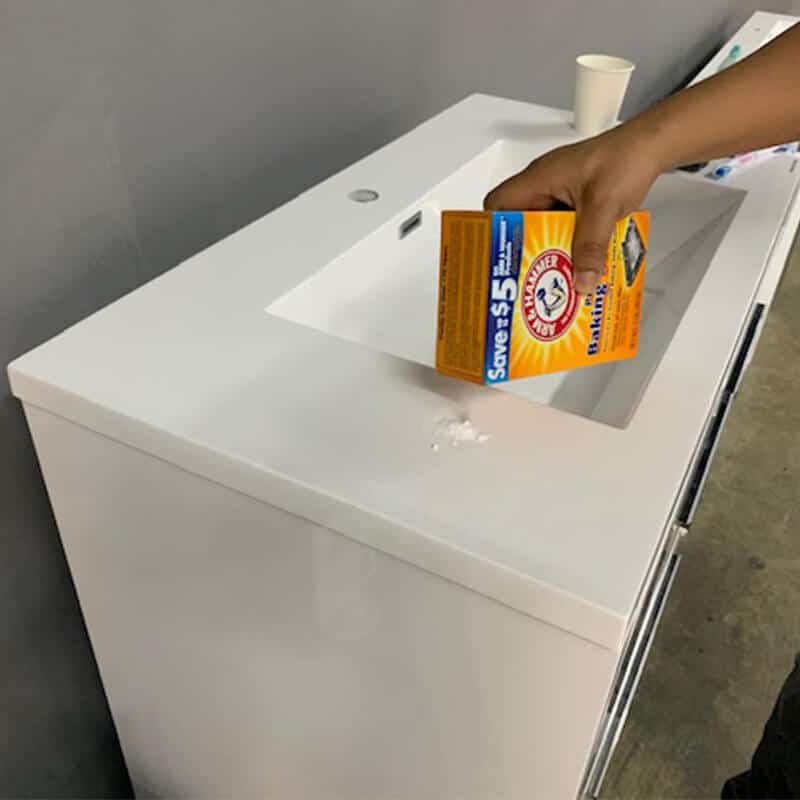

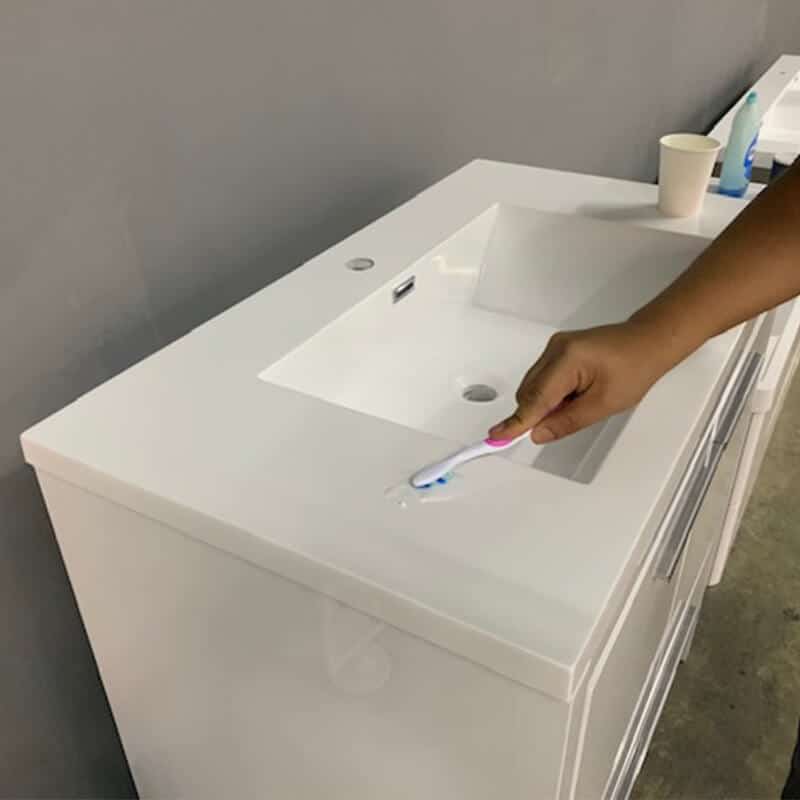
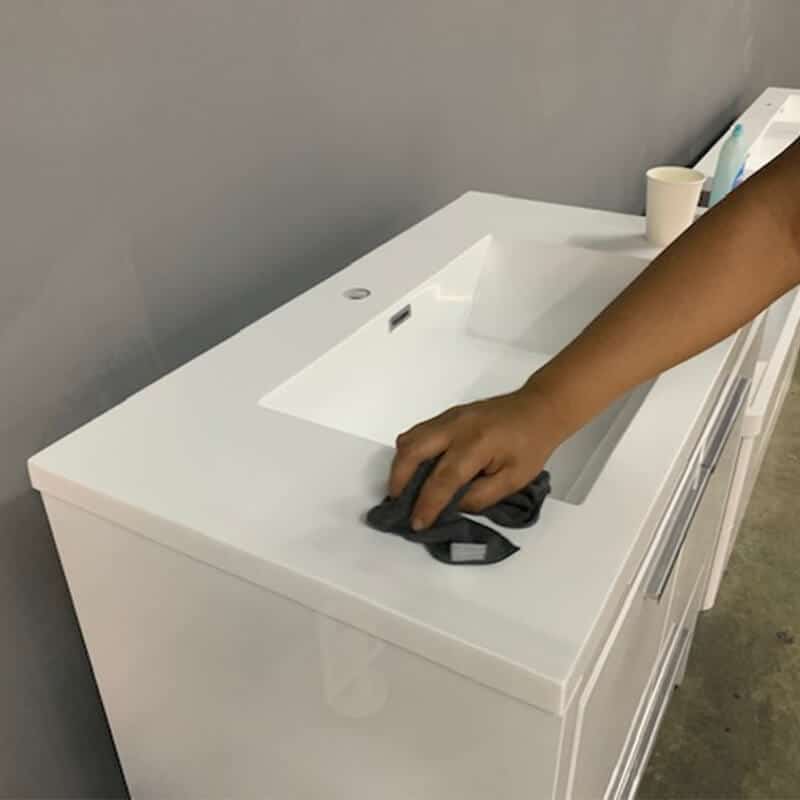
Plastic areas that are discolored yellow can be cleaned with a baking soda and water paste and a toothbrush. Doing this should lighten the areas until the yellow stain disappears.








